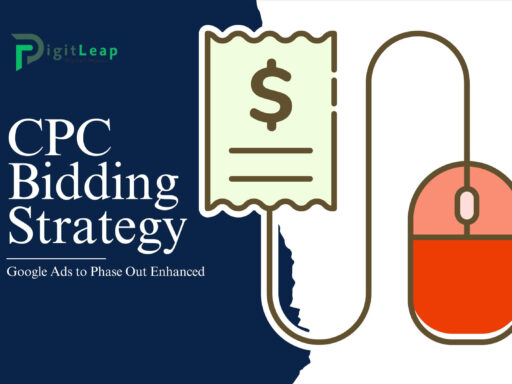Google Ads Expands AI Campaign Tools to More Languages
Google Ads continues to push the boundaries of digital advertising by expanding its AI-powered campaign tools to support more languages. This move is part of Google’s broader initiative to make advanced advertising tools accessible to businesses around the world, regardless of their location or native language. By offering AI-driven solutions in more languages, Google is helping advertisers reach wider audiences, tailor their campaigns more effectively, and ultimately, achieve better results.
In this article, we’ll look at how this expansion benefits advertisers, what it means for businesses operating in non-English markets, and how to get the most out of these new AI tools in your campaigns.
What Are Google Ads AI Campaign Tools?
Google Ads’ AI campaign tools are designed to simplify and optimize the process of running digital ads. These tools use artificial intelligence to automate and enhance various aspects of campaign management, from keyword selection to bidding strategies and even ad creation. By analyzing vast amounts of data in real-time, Google’s AI tools can make adjustments that improve ad performance, all while reducing the amount of manual work required.
Some of the key features of these AI-powered tools include:
- Smart Bidding: This automatically sets bids based on the likelihood of a conversion, helping to maximize your return on investment (ROI).
- Responsive Search Ads: AI helps create multiple versions of your ad by combining different headlines and descriptions, ensuring that the most effective combinations are shown to users.
- Performance Max: A goal-based campaign type that uses AI to optimize ads across all of Google’s inventory, including YouTube, Search, Display, and Gmail.
The recent expansion of these AI tools to more languages means that businesses in non-English-speaking regions can now take full advantage of Google’s advanced campaign automation features.
More Languages, More Opportunities
With the expansion of Google Ads AI campaign tools to additional languages, businesses operating in regions where English isn’t the primary language can now enjoy the same benefits as those in English-speaking markets. This opens up new possibilities for companies to reach local audiences with tailored ads, all while leveraging AI to optimize their performance.
Some of the key languages included in this expansion are:
- Spanish
- French
- German
- Portuguese
- Japanese
- Arabic
This is just a snapshot of the growing list of supported languages, with more being added to ensure that businesses can connect with their audiences in a language that resonates.
How This Expansion Benefits Advertisers
The expansion of Google’s AI campaign tools to more languages brings a host of benefits to businesses looking to scale their advertising efforts internationally or locally. Let’s break down some of the key advantages.
1. Localized Campaigns
One of the most important aspects of successful digital advertising is creating ads that speak directly to the audience. With Google Ads now offering AI tools in more languages, businesses can create localized campaigns that resonate with regional audiences. Instead of relying on translations that might miss the nuances of local language and culture, businesses can use Google’s AI tools to craft campaigns that feel native to the target market.
For example, if you’re a business operating in Latin America, you can now use Google’s AI tools to create ads in Spanish that are optimized for the local market. This not only improves the effectiveness of your ads but also helps you build a stronger connection with potential customers.
2. Improved Ad Performance
Google’s AI tools are designed to optimize ad performance in real-time. By analyzing user behavior, search trends, and other key factors, these tools make adjustments to ensure your ads are shown to the right people at the right time. Now that these tools are available in more languages, businesses can expect even better ad performance in non-English markets.
For instance, AI-driven smart bidding will now be able to optimize bids based on conversion likelihood in multiple languages, ensuring you get the best possible return on your ad spend. Similarly, responsive search ads will now adapt to different languages, helping you serve the most relevant and engaging ads to your audience.
3. Time and Resource Savings
Running successful ad campaigns requires a lot of time and resources, especially when managing multiple languages and regions. Google’s AI tools simplify this process by automating many aspects of campaign management, such as setting bids, choosing keywords, and even creating variations of your ads. With these tools now available in more languages, businesses can focus less on the technical details of campaign management and more on overall strategy and creativity.
For example, if you’re managing ads across different countries, you no longer need to manually adjust each campaign for language-specific factors. Google’s AI tools will handle these adjustments automatically, saving you time and effort while still delivering high-performance ads.
Maximizing the Use of Google’s AI Tools in Multiple Languages
To make the most of Google’s expanded AI campaign tools, here are a few tips to help you get started:
1. Understand Your Audience
Before launching any campaign, it’s crucial to understand the cultural and linguistic preferences of your target audience. Simply translating your ads isn’t enough—you need to ensure the message, tone, and even imagery resonate with the local audience. Google’s AI tools can help optimize your campaign, but understanding your audience is key to making sure the AI has the right input.
2. Leverage Responsive Search Ads
Google’s responsive search ads allow you to create multiple headlines and descriptions, and the AI will test different combinations to see which ones perform best. Take advantage of this feature by creating ads in multiple languages, and let Google’s AI find the best version for your audience.
3. Set Goals for Smart Bidding
With the expansion to more languages, Google’s smart bidding feature can help you get the most out of your budget by automatically setting bids based on the likelihood of a conversion. Be sure to define clear goals for your campaigns, whether it’s driving sales, increasing leads, or boosting traffic, so the AI can optimize bids to meet your objectives.
4. Monitor and Adjust
Even though Google’s AI tools automate much of the process, it’s still important to monitor your campaigns regularly. Check performance metrics to see how different languages and regions are responding to your ads, and adjust your strategy as needed. AI is powerful, but your insights can take your campaigns even further.
Conclusion
The expansion of Google Ads AI campaign tools to more languages is a significant development for businesses aiming to reach global or regional audiences. By supporting more languages, Google is making it easier for advertisers to create and optimize campaigns that resonate with people in their native language, resulting in better engagement and improved campaign performance.
At DigitLeap, we’re excited about the opportunities this expansion brings for businesses of all sizes. Whether you’re looking to expand into new markets or simply optimize your existing campaigns, leveraging Google’s AI tools can help you achieve your advertising goals more efficiently and effectively. Let us help you make the most of these cutting-edge tools and grow your business in today’s global marketplace.






